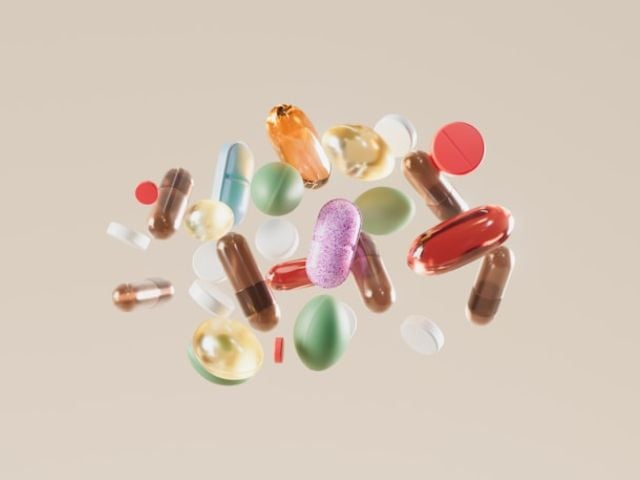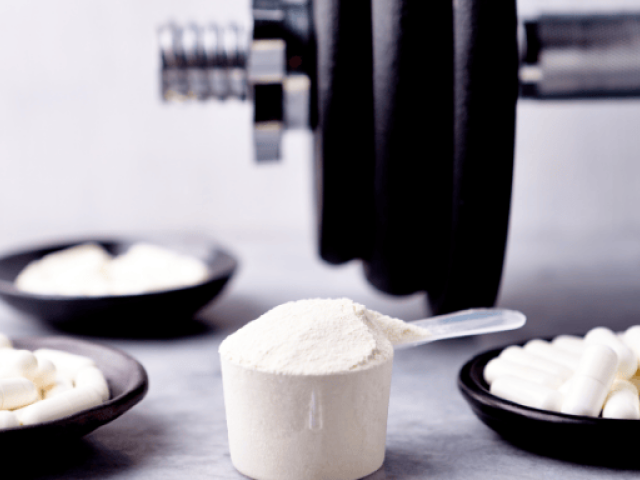
Should You Use Creatine While Dieting or Cutting?
Many people wonder if they should continue taking their creatine supplement when trying to lose weight. The short answer is yes, but there are important considerations to keep in mind.
Creatine monohydrate remains one of the most researched supplements for muscle building and performance. When you’re cutting or dieting, this supplement becomes even more valuable for preserving muscle mass and maintaining workout intensity.
Key Takeaways
- Creatine helps preserve muscle mass and strength during calorie restriction.
- Water weight gain is temporary, beneficial, and occurs inside muscle cells.
- 3-5g daily provides optimal results without dramatic scale fluctuations.
- Focus on measurements and photos rather than scale weight when tracking progress.
What Happens When You Use Creatine While Cutting
Cutting involves creating a calorie deficit to reduce body fat while keeping as much muscle as possible. This process naturally challenges your energy levels and training performance.
Your body requires adequate energy to maintain muscle tissue during weight loss. Without proper support, you may lose both fat and muscle mass together.
Studies indicate that creatine supplementation helps preserve muscle creatine stores during energy restriction.1 This preservation supports better performance and muscle retention compared to placebo groups.
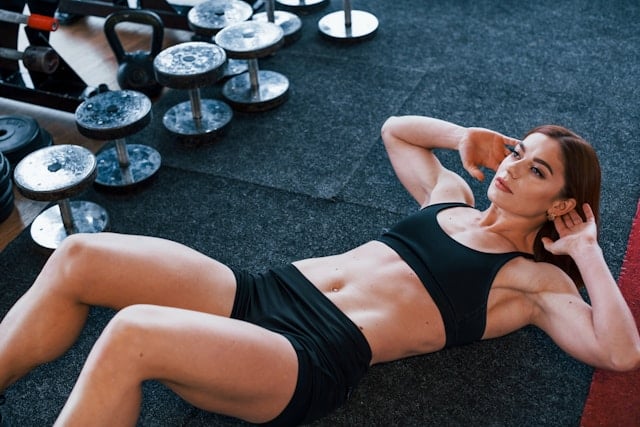
How Creatine Works During Fat Loss
Creatine increases phosphocreatine stores in your muscles. These stores help rapidly regenerate ATP, which provides energy for muscle contractions during high-intensity exercise.
This mechanism offers several key advantages when you’re in a calorie deficit:
- Energy substrate availability: Maintains power output when calories are restricted
- Performance preservation: Keeps workout intensity high despite lower energy intake
- Recovery support: Reduces muscle damage and inflammation between training sessions
The energy production benefits become particularly important when your dietary calories are limited. Your muscles can still perform at higher intensities with adequate creatine stores.
Benefits of Creatine for Weight Loss
Here are some of the potential benefits of creatine when it comes to weight loss.
Strength Preservation
Maintaining strength during a caloric deficit can be tough for most people. Creatine supplementation helps preserve power output and training intensity throughout your cutting phase.
Higher training intensity directly supports muscle mass retention. When you can lift heavier weights for more reps, you send stronger signals to maintain muscle tissue.
Enhanced Muscle Fullness
Reduced carbohydrate intake often makes muscles appear flat due to lower glycogen stores. Creatine helps maintain muscle volume and fullness by increasing intracellular water content.2
This water retention occurs inside muscle cells, not under the skin. The result is better muscle definition rather than a bloated appearance.
Improved Recovery
Faster recovery between workouts allows you to maintain higher training volumes. This increased volume can enhance both fat loss and muscle retention during your cutting phase.
For more insights on optimizing your cellular energy during weight loss, read our guide on NAD for Weight Loss.
| Benefit | How It Helps During Cutting |
|---|---|
| Strength preservation | Maintains workout intensity |
| Muscle fullness | Improves muscle definition |
| Better recovery | Allows higher training volume |
| Energy production | Supports performance on fewer calories |
Does Creatine Cause Water Weight Gain?
The water weight concern represents the biggest hesitation people have about using creatine while cutting. Understanding what type of weight gain occurs helps address this worry.
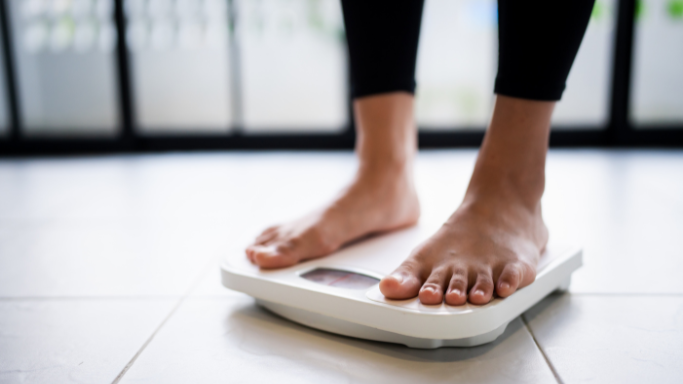
Intramuscular vs. Subcutaneous Water
Creatine draws water into muscle cells, not under the skin. This intramuscular water retention actually enhances muscle appearance and definition.
Subcutaneous water retention creates a soft, bloated look. Intramuscular water retention creates fuller, more defined muscles.
Timeline and Amount
Water retention from creatine typically occurs within the first week and stabilizes afterward. Evidence suggests creatine can increase total body water by approximately 2-4%.3
Most people experience a 2–4-pound weight increase during the first week. This represents increased muscle water content, not fat gain.
Scale Weight vs. Body Composition
Many individuals report weight stagnation when starting creatine during a cut. The scale may not move for several weeks while body composition continues improving.
Focus on measurements, progress photos, and how clothes fit rather than relying solely on scale weight. These methods better reflect your actual fat loss progress.
How to Take Creatine Supplements When Dieting
The right dosing strategy can minimize water weight concerns while maximizing performance benefits.
Maintenance Dosing Approach
Rather than using a traditional creatine loading phase, many cutting athletes prefer starting with 3-5g daily. This approach reduces rapid water weight gain while still saturating muscle stores over 3-4 weeks.
A maintenance dose provides the same long-term benefits without the initial weight fluctuation that can discourage dieters.

Creatine Loading Considerations
If you choose to load with 20-25g daily for 5-7 days, expect an initial weight increase of 2-4 pounds. This weight gain is temporary and represents beneficial muscle water content.
The loading phase saturates muscle creatine stores faster but isn’t necessary for effectiveness. Choose based on your comfort level with initial weight changes.
Timing Flexibility
Creatine timing remains flexible during cutting. You can take it pre-workout, post-workout, or at any consistent time daily.
Some evidence suggests post-workout consumption with carbohydrates may enhance uptake. However, this isn’t critical for overall effectiveness.4
For optimal results, consider combining creatine with other performance-supporting compounds. Jinfiniti’s Creatine + ATP provides 4g of creatine monohydrate plus 400mg of disodium ATP for enhanced energy production.
Who Can Benefit from Creatine While Cutting?
Certain groups see more dramatic results from creatine supplementation during weight loss phases.
Athletes and Active Individuals
People engaged in resistance training or high-intensity activities see the most dramatic benefits. Creatine helps maintain performance when energy intake is restricted.
Your muscles naturally produce creatine, and you also get small amounts from meat and fish in your diet. However, these sources don’t provide enough to maximize muscle stores during intense training.

People Seeking Additional Fat Loss Support
Emerging research suggests creatine may provide direct fat loss benefits. Some studies indicate it might increase thermogenesis in fat cells and reduce triglyceride storage.5 6
While more research is needed, these potential metabolic advantages add to creatine’s value during cutting phases.
High-Volume Trainers
Higher training volumes during cutting can enhance both fat loss and muscle retention. Creatine supports this by improving energy production and recovery capacity.
Maintaining workout intensity becomes easier when your muscles have adequate energy substrates available.
For comprehensive cellular health support during your cutting phase, explore our cellular health supplements guide.
Understanding Creatine and Weight Loss Effects
Not everyone responds to creatine the same way, and several factors influence its effectiveness.
Individual Response Variation
Approximately 20-30% of people may be “non-responders” to creatine supplementation. These individuals typically have naturally high muscle creatine stores.7
If you don’t notice benefits after 4-6 weeks of consistent use, you may fall into this category. Most people, however, experience clear improvements in performance and muscle fullness.
Muscle Mass Preservation
Resistance training combined with adequate protein intake helps preserve muscle during weight loss. Creatine enhances this process by supporting training intensity and muscle protein synthesis.
Better workout performance leads to stronger muscle-building signals. This helps maintain lean body mass while losing fat mass.
Competition Preparation
Competition preparation can continue with creatine supplementation. The intramuscular water often enhances muscle fullness and vascularity for physique athletes.
Many competitors worry about looking “smooth” but find that creatine actually improves their stage appearance.
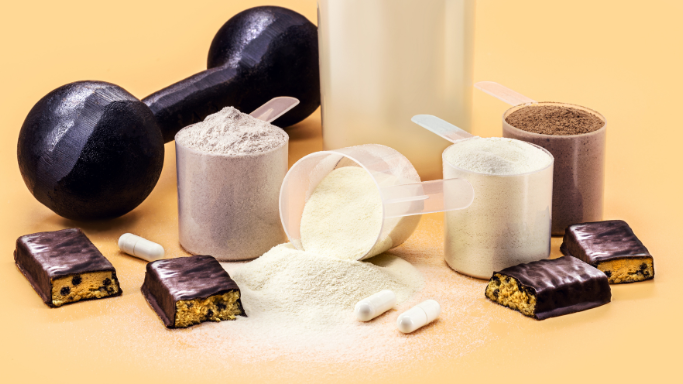
Effects of Creatine on Body Composition
Creatine’s impact on body composition extends beyond simple water retention effects.
Long-term Composition Changes
Consistent creatine use during cutting phases typically results in better muscle retention and improved body composition outcomes.
The preserved muscle mass helps maintain metabolic rate, making it easier to sustain weight loss long-term.
How Creatine May Help You Burn Fat
While creatine doesn’t directly burn fat, it supports the conditions that make fat loss more effective. Higher training intensity, better recovery, and preserved muscle mass all contribute to successful cutting.
The ability to maintain strength and muscle mass during a calorie deficit sets you up for better long-term results.
Water Retention Patterns
The water retention from creatine occurs primarily in muscle tissue. This creates a more muscular, defined appearance rather than causing bloating.
Understanding this difference helps you stay consistent with supplementation even when the scale doesn’t move immediately.
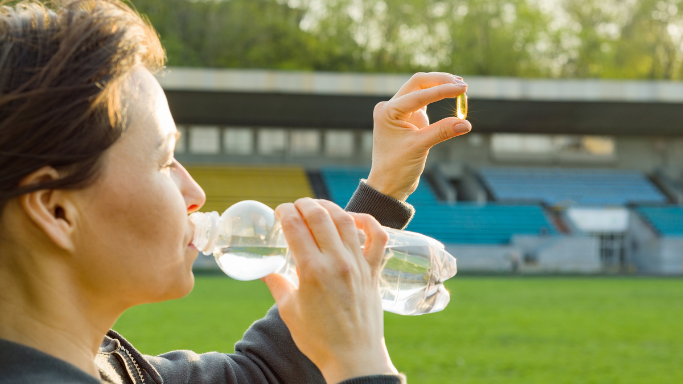
Practical Tips for Using Creatine When Trying to Lose Weight
Smart supplementation strategies help you get the most from creatine while cutting.
Choosing the Right Form
Creatine monohydrate remains the gold standard due to extensive research and proven effectiveness. Other forms may cause less water retention but don’t offer superior results.
Stick with the most researched form unless you have specific reasons to try alternatives. Learn more about the different types of creatine in our comprehensive guide.
The Importance of Hydration
Adequate water intake becomes essential when using creatine, especially during cutting when fluid intake may be monitored closely. Proper hydration supports creatine uptake and prevents side effects.
Aim for at least 3-4 liters of water daily when supplementing with creatine.
Being Consistent
Daily supplementation maintains elevated muscle creatine stores. Missing doses can lead to gradual depletion and reduced benefits.
Set a consistent time each day to take your supplement, whether with meals or around workouts.
Consider supporting your cutting goals with comprehensive cellular energy optimization. Jinfiniti’s Vitality↑® NAD+ Booster contains creatine monohydrate along with NAD+ precursors to support cellular energy production during caloric restriction.
Addressing Common Concerns
True bloating from creatine is rare and typically occurs only with excessive doses. The water retention should enhance rather than detract from muscle definition.
Most people who experience negative effects are taking too much or not drinking enough water. Start with 3-5g daily and maintain adequate hydration.
Check out our article debunking creatine myths for more information about common misconceptions.
Monitoring Your Progress
Track your progress through multiple methods when using creatine during cutting:
- Body measurements (waist, arms, chest)
- Progress photos in consistent lighting
- How clothes fit and feel
- Strength and performance metrics
- Energy levels throughout the day
The scale alone doesn’t tell the complete story when you’re gaining muscle water while losing body fat.
For women specifically concerned about creatine use, our creatine for women FAQ addresses common questions about weight gain, hormones, and safety.
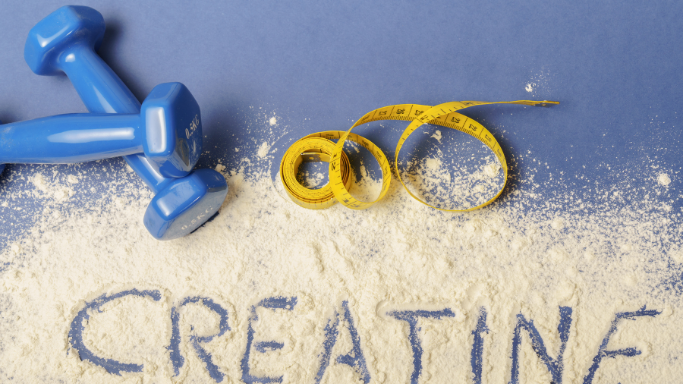
The Final Scoop
You can absolutely use creatine while cutting or dieting. The initial water weight gain represents beneficial muscle hydration, not fat storage.
Focus on the bigger picture: better workouts, preserved muscle mass, and improved recovery. These benefits support your long-term body composition goals far more than temporary scale fluctuations hurt them.
Start with 3-5g of creatine monohydrate daily, drink plenty of water, and track progress through multiple methods. Your muscles will thank you, and your cutting results will likely improve compared to going without this valuable supplement.
Remember that successful weight loss requires patience and consistency. Creatine serves as a powerful tool to help you maintain the training intensity and muscle mass that make cutting both more effective and sustainable long-term.
Referenced Sources:
- https://pubmed.ncbi.nlm.nih.gov/11194113/ ↩︎
- https://pmc.ncbi.nlm.nih.gov/articles/PMC155510/ ↩︎
- https://pmc.ncbi.nlm.nih.gov/articles/PMC155510/ ↩︎
- https://pmc.ncbi.nlm.nih.gov/articles/PMC5424457/ ↩︎
- https://pmc.ncbi.nlm.nih.gov/articles/PMC8308802/ ↩︎
- https://www.sciencedirect.com/science/article/abs/pii/S0300908423000408 ↩︎
- https://pmc.ncbi.nlm.nih.gov/articles/PMC7996722/ ↩︎









